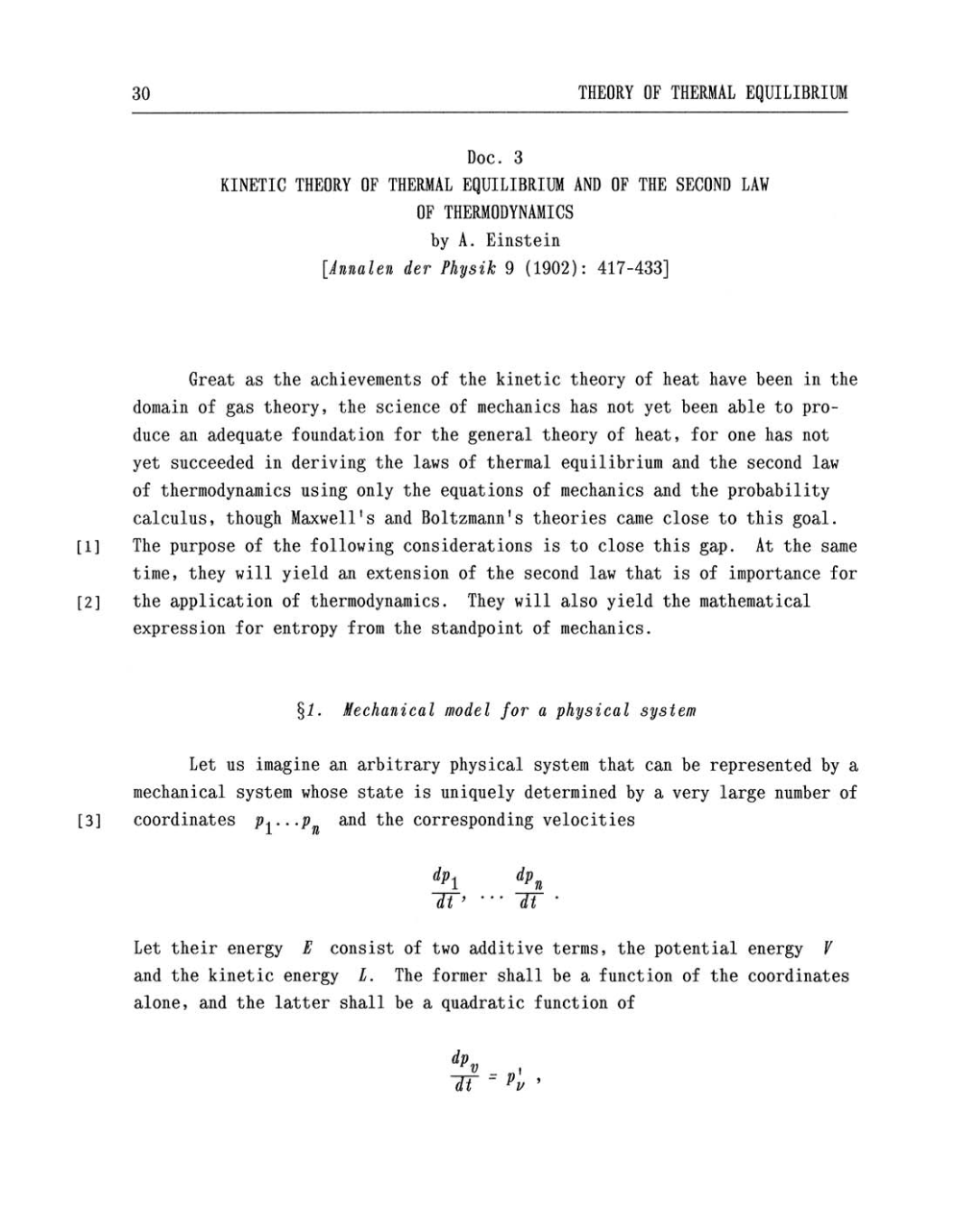30
THEORY OF THERMAL
EQUILIBRIUM
Doc.
3
KINETIC
THEORY OF THERMAL
EQUILIBRIUM AND
OF THE SECOND
LAW
OF THERMODYNAMICS
by
A.
Einstein
[Annalen
der
Physik
9
(1902):
417-433]
Great
as
the achievements of the kinetic
theory
of heat
have been in
the
domain
of
gas
theory,
the science
of mechanics has
not yet
been
able
to
pro-
duce
an
adequate
foundation
for
the
general
theory
of
heat,
for
one
has not
yet
succeeded in
deriving
the
laws of
thermal
equilibrium
and
the
second
law
of
thermodynamics
using only
the
equations
of
mechanics and
the
probability
calculus,
though
Maxwell's and
Boltzmann's theories
came
close
to
this
goal.
[1] The purpose
of the
following
considerations is
to
close this
gap.
At
the
same
time, they
will yield
an
extension
of
the
second
law
that is of
importance
for
[2]
the
application of
thermodynamics.
They
will also
yield
the mathematical
expression
for
entropy from
the
standpoint of
mechanics.
S1. Mechanical
model
for
a
physical
system
Let
us imagine
an
arbitrary
physical
system
that
can
be represented
by a
mechanical
system
whose
state
is
uniquely
determined
by a
very
large
number
of
[3]
coordinates
P1...Pn
and
the
corresponding
velocities
dh
dPn
TT9
"'TT
'
Let
their
energy E
consist
of
two
additive
terms,
the
potential
energy
V
and
the kinetic
energy
L. The
former
shall
be
a
function of the
coordinates
alone, and
the latter shall
be
a
quadratic
function of
dP*
n IT
~
pu
'
